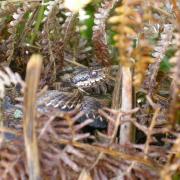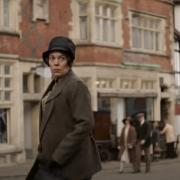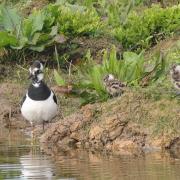Compiled by Chris Horlock
Inn for a penny
Stories of Sussex smugglers are so common and widespread, it seems everyone in the county was involved in the ‘business’, one way of the other. This is amusingly confirmed in one of Horace Walpole’s letters (1717-1797 - he was the son of Britain’s first Prime Minister), where he gives an account of ‘an adventure’ he had in Sussex. In the course of his travels, he arrived at ‘the wretched village of Rothebidge’ (Robertsbridge), where he intended spending the night. There was only one bed to be had, all the rest being occupied by smugglers, ‘whom the people of the house called ‘mountebanks’. With Walpole was a friend, a Mr Chute, and ‘the lady of the den told Mr Chute he might lie with one of the smugglers.’ The offer was declined, and, the pair of travellers wearily proceeded to Battle, reached ‘that village’ at two in the morning, and found repose - of a sort - ‘at a still worse inn’, which was the exact opposite of the former. It was crammed with excise officers, ‘one of whom had just shot a smuggler!’
--------------------------------------------------
Poetry+ by Tony Ward
Poetry+ combines an easily accessible poem, containing embedded clues relating to a well-known place, person or event, with a Commentary identifying the subject and expanding upon the embedded references. The Commentary is like an extended footnote, elevated to equal status to the poem. The idea is to increase the reader’s enjoyment, getting little bursts of pleasure in recognising the references and finding out interesting and often amusing facts about the subject of the poem. Poem and Commentary are designed to feed off each other – “the whole being greater than the sum of the parts”.
In the Sussex Life series each work relates to a Sussex place or person. The poem is presented as a puzzle - poetry as University Challenge, as pub quiz, as cryptic crossword. In each poem the clues vary in difficulty. It should be fairly easy to identify the person or place, but the challenge then comes in recognising and solving as many of the embedded clues as the reader has the time or inclination to pursue. The Commentary, printed the following month, then becomes the solution.
A hundred miles to go
Stars of stage and screen,
painted, filmed, photographed,
each brother bedazzled.
Their guiding light lost,
but regained,
restored.
Where the chalk wall falls to the foam,
children are rock-pooling through the ages,
countless ages,
encased in stones and bones.
Shrimping nets replace flint tools,
a new tribe
replacing the old.
And memories –
bluebirds over white cliffs,
where wings of war set forth.
Gap years in cottages, lost to time and tide.
Smoke still rising –
but now from happy driftwood fires,
evenings under the stars,
but still, for some, a hundred miles to go.
--------------------------------------------------
Napoleon’s nemesis
At no 53 Regency Square, Brighton. Here, for ‘the season’ of 1824-25 stayed Sir Hudson Lowe, KCB (1769-1844), whose fame mostly rests on the fact that he was Napoleon’s jailer while a captive of the British on the island of St Helena.
Having lost the battle of Waterloo (1815) and the people of France turning violently against him, Napoleon was confined in a damp and dilapidated property known as Longwood House on the island and Lowe followed his orders for confining the ex-Emperor of France to the letter. At one time the firewood he allocated was so inadequate Napoleon broke up his furniture to burn in the fireplace. Their relationship was stormy, and it’s said they only met, face to face, half a dozen times. Even The Times published articles on how Napoleon’s deprivations under Lowe were an attempt by the British Government to hasten his death, and there were many plots to free him, including one involving a primitive submarine.
Napoleon died in May 1821, aged just 51. The idea that he was deliberately poisoned, with arsenic, over the six years he was held on St Helena, and that Lowe might have been involved, is now totally dismissed and the original autopsy finding, of death by stomach cancer, is firmly believed to be the real cause.
--------------------------------------------------
Sussex slang - Catterning and Clemmening
To go catterning is to go round begging for apples and beer for a festival on St Catherine’s Day and singing:
“Catter’ and Clemen’ be here, here, here,
Give us your app9les and give us your beer,
One for Peter, Two for Paul,
Three for him who made us all;
Clemn’ was a good man, Cattern’ was his mother;
Give us your best, and not your worst,
And God will give your soul good rest”.
Clemmening was similarly the act of going round asking for apples and beer on St Clement’s Day. In spite of a proclamation made at London in 1540 that “neither children should be decked ne go about upon the days of St. Nicholas, St Catherine, St. Clement, the Holy Innocents and such days” the children in some parts of East Sussex still kept up the custom of catterning and clemmening, and the Sussex blacksmiths were particularly active in commemorating their patron saint. The anvils were fired with a loud explosion, and at least a half- holiday was kept. At Burwash, a few years ago, it was the custom to dress up a figure with a wig and beard and a pipe in his mouth, and set it up over the door of the inn where the blacksmiths feasted on St. Clement’s Day (23 November).


























